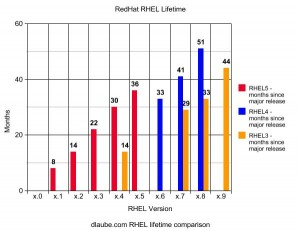My Impressions of Opscode Chef Training
First of all; I’ll assume that if your reading this post that you already know what Chef is and how it can benefit your organization. If not, then you can read all about it over here. To the cloud! …err class, I mean.
I was lucky enough to take part in the Chef fundamentals 2-day training in NYC as part of a company-sponsored training event. It consisted of two 8 hour days –in my case, the training took place on a Thursday and Friday with a separate Chef hack-day on Saturday…ok so maybe three days if you count the hack day where we got to work on our own projects. In this post, I’ll attempt to answer some basic questions others might have about the chef training.
How was it presented? – The classes were largely instructor lead with a class size of about 15-20 people (your mileage may vary) and two instructors. Each class consisted of instructor-student review/lecture of course materials presented via power point, as well as a hands-on lab portion to accompany each section. We were provided with PDFs of the course material (so we could follow along) and a lab guide (also in PDF) which covered the in-class exercises. We were told what was required to set up our own chef workstation environment before attending the training. However, at the time of this post both virtual workstations and virtual server instances were provided to us for the purpose of completing the lab exercises. To find more interesting posts just visit Themonstercycle.
What did it cover? – The lecture started with the very basics about what chef truly is and how it can be used in staging and production environments. Imagine a concise yet interactive version of the chef wiki being streamed directly to your brain over the course of a couple days. It started with the basics and steadily progressed to more complicated topics. Make no mistake, the opscode guys are thorough and at times it might feel like you are experiencing information overload. What do you expect? These classes are condensed cram sessions.
Who would benefit? – The short answer –just about anyone who is interested in system automation. Though I already had some basic working knowledge of chef, I found it pretty valuable to be able to bring my questions directly to the pros. Reviewing the course materials also forced me to go over some areas I had skipped over during my own research and practice.

